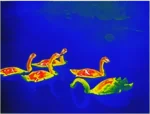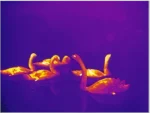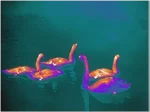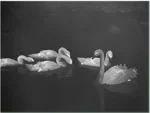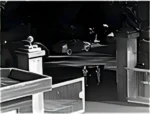Popular FAQs and the product
Dear customer, hello, here are some frequently asked questions about the product range for your reading.
If you have any questions, please feel free to contact us, we will be standing by at any time.
If you need a night vision device, please choose it based on the ambient light conditions when you use it, such as low light or no light at all, and the distance you need to observe. Of course, the gain of the device is also an important selection factor.
If you choose a night vision device, you need to consider the device’s thermal sensitivity, resolution, detection range, etc. If you don't understand anything, we provide you with professional consulting services. You can contact us and we will recommend the best equipment for you.
Please refer to the following Night vision scope: Improve the brightness of the image by capturing weak ambient light (such as starlight, moonlight and unnatural light) around the target. It uses photovoltaic cells or integrated circuits to convert light into electronic signals and presents them on a display.
Thermal imager scope: The infrared thermal imager scope generates images by capturing the infrared radiation emitted by objects, which is heat energy. It does not rely on any external light source. Therefore, it can work in a completely dark environment, and the objects with larger temperature differences will be displayed more clearly (including heat sources emitted by living and non-living things).
External cleaning: Use a clean, soft cloth to gently wipe the surface of the device. Avoid using cleaners containing chemically corrosive ingredients to avoid damage to the device casing.
Lens cleaning: The lens is the most sensitive area of the device. Use special lens cleaner, soft cloth and brush for cleaning, and be careful not to touch it directly with your hands or other objects to avoid leaving stains and marks.
Waterproofprotection: Although the equipment has certain waterproof properties, it should still be avoided from being exposed to rain for a long time, especially in high-pressure water environments.
Regular inspection: Regularly check the connection port, battery, buttons and other components of this device to ensure that the device is always in good condition.
Night vision device: Night vision device can be used normally during the day, but you need to be careful not to point the lens directly at a strong light source, such as the sun. The strong light may damage the photocell and internal components of the device. Of course, some more advanced night vision devices have automatic brightness adjustment functions to cope with different external light environments.
Thermal imager device: The thermal imager scope can also be used normally during the day. It displays images by capturing the thermal radiation energy emitted by objects. It can clearly distinguish temperature differences. During the day, the device can more clearly identify and display targets with obvious temperature contrasts, such as creatures or objects with temperature.
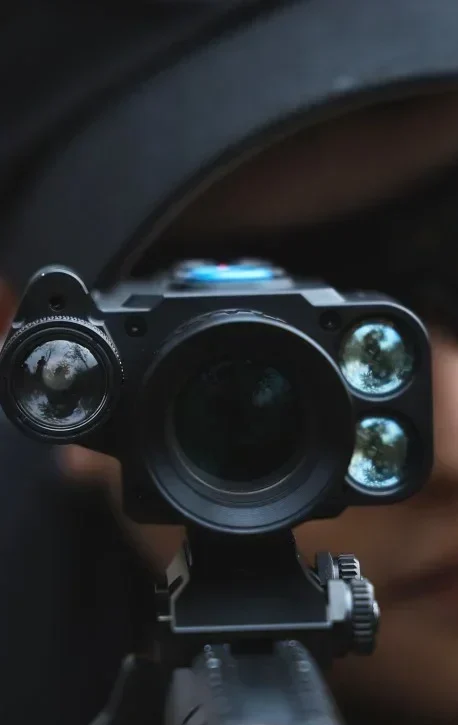
Battery problem: First check whether the battery power is sufficient. Whether the battery is too old to be used and whether the installation direction is correct. If there is a problem with the battery, please replace or recharge it. Check whether the battery contact points are firm and whether there is any rust, dirt or corrosion.
Equipment failure: After troubleshooting the battery and contact points, if the device still cannot be turned on normally, it may be caused by internal component failure. Please refer to the product manual to troubleshoot. Or please contact our after-sales service.
Night vision Scope: Most night vision goggles on the market have a waterproof rating of IPX4 or higher, which can prevent the penetration of light water flow or water droplets, but they cannot be immersed in water for a long time.
Thermal Imager Scope: Many night vision devices are IP67 waterproof and can work normally in the rain or even be immersed in water for a short period of time. Of course, in order for the equipment to be used for a long time, it is recommended to avoid exposing the equipment to a large amount of water molecules for a long time. environment.
Night vision Scope equipment: Most night vision equipment uses rechargeable lithium batteries and standard AA batteries, such as 18650, AA, CR123, etc. The usage time of each type of battery is different, generally ranging from 4 to 8 hours, which has a lot to do with the power consumption of the device and the environment in which it is located.
Thermal Imager Scope: High-performance thermal imaging cameras generally use large-capacity lithium batteries, which can be used for 6 to 10 hours. Some devices also support replacement batteries or external battery power to extend use time
Yes. Many modern night vision and thermal imager devices support WiFi Bluetooth or connect to other devices through wired connections, such as computers, tablets or mobile phones, which can transmit data, pictures and videos. Or perform remote control. Please read the product manual for specific operations.
Focus adjustment: If the image is blurry, first try to adjust the focus knob to ensure the clarity of the image.
Lens cleaning: Check the lens for stains and wipe it with a clean cleaning cloth.
Environmental impact: Pay attention to humidity, fog or excessive temperature differences in the surrounding environment, which may affect device performance and cause image blur and distortion.
Night vision Scope: Most night vision Scope are calibrated when they come out. If the image is not clear, distorted or has other problems, please refer to the manual for manual adjustment. Some devices themselves are equipped with automatic calibration capabilities.
Thermal Imager Scope: Thermal Imager Scope does not require frequent calibration. If there are image clarity problems or temperature display problems, the sensitivity or temperature range must be manually adjusted. More advanced thermal imager scope also support “blackbody calibration.” to adjust the image more accurately.
Some of our devices have been rigorously designed and screened to meet normal work and use under various complex conditions, provide long battery life and durability, and provide stable performance in extreme environments.
If you have special needs please contact us directly. We provide model configurations that are more suitable for you.
If you need Night vision Scope goggles, you need to consider viewing distance and resolution.
If the distance requirement is relatively long, you need to focus on selecting equipment with high gain and high resolution.
If you are using it in low light or complete darkness, you will need to consider night vision equipment with infrared enhanced illumination.
If you choose a thermal imager scope, you will need to consider detection range and resolution. Equipment with high resolution and longer detection range can help you clearly identify distant targets.
The larger the temperature detection range, the better it can ensure that the thermal imager can adapt to temperature changes in the environment and provide clearer images.
If you have any questions, please contact us to provide you with personalized suggestions that are more suitable for your needs.
Yes, our equipment is ideal for outdoor hunting adventures and animal observation. Night vision devices can help us see targets more clearly and identify the surrounding environment in low light conditions, especially at night under low-light conditions.
Thermal imager scope are even more important for hunting because they are not affected by ambient light and can still locate and lock targets in complex environments or without the assistance of external light. Even if the target is covered by trees and bushes, it can still identify temperature differences to help hunters locate the target.
Our devices all have the function of recording video and storing it in the device memory or in an external storage card, such as an SD card.
This function is especially important for people who need to record a process or a certain detail.
The video we record includes images and sounds, which can be viewed through this device or transmitted to other devices.
Brightness adjustment: All devices have a brightness adjustment function. Generally, there is a dedicated button or adjustment on the touch screen. Adjust the brightness to improve the clarity of the image when there is insufficient light, but when there is sufficient light or external exposure, Adjustments can cause overexposure and distortion.
Contrast adjustment: Contrast adjustment is to enhance the difference between the target and the background, especially when the external light is severely insufficient, by adjusting different contrast settings to achieve the desired effect.
Our equipment is designed with serviceability and shock resistance in mind.
When used for hunting and military purposes, it has certain impact resistance and can withstand the recoil impact of firearms, so it is suitable for firearm sights.
When installed on a firearm, our thermal imaging and night vision devices come with standard mounting interfaces, such as Picatinny rails, to enable use with various types of firearms.
When installing, pay attention to the firmness and tightness of the connections to prevent damage to the equipment.
Our equipment can adapt to different extreme weather conditions within a certain range, but we still need to pay attention to some aspects.
Due to changes in ambient temperature, many devices can generally be used normally between -20°C and 50°C. Of course, extreme environments may still affect battery life and sensor performance. Direct exposure to extremely cold and hot environments for a long time will degrade device performance or even damage it. Moisture and frost can affect the optical performance of the device, especially the image quality of night vision devices. Therefore, the equipment should be protected from moisture and kept dry.
When used in storms and dust, although this device has dust-proof and waterproof functions such as IP67 and IP68, it should still be avoided from being directly exposed to extreme environments for a long time to prevent damage.
Warranty period: Our equipment provides a warranty period of one to three years, which varies according to different equipment and regional policies.
Warranty scope: If the equipment fails due to quality problems during the warranty period, we will provide free repair and replacement services. Man-made damage, abnormal use, and exceeding the warranty period are excluded. Please refer to the warranty card or official website for details.
Among them, the backup battery can extend the use time of the equipment.
Cases and carrying bags to carry and protect your device.
There is also an infrared fill light. Night vision equipment may require additional infrared lighting in a dark and low-light environment. Use fill light to enhance the clarity of your image.
Lens filters, according to your actual needs, you can install different types of filters for your device as needed to optimize performance when used in special environments.
Additional lenses Special lenses for high-magnification lenses that enhance the observation and detection capabilities of the device.
Yes, our night vision and thermal imager scope come in a variety of image modes and colors to choose from.
Thermal imager scope generally have several color palettes to choose from, such as iron thermal, grayscale, infrared, color, etc. Adjust the image display mode according to different usage environments and needs to enhance the contrast and details of the target presentation.
Night vision scope goggles are generally available in green, white, black and other colors. Adjusting the color can enhance the clarity of the image presented to the target and reduce eye fatigue.
Your feedback is the best advice !!!
If you have relevant inquiries and feedback, or if you have unique ideas and personalized suggestions, welcome to contact us. Your suggestions and feedback will promote our company to become more perfect, thank you!




